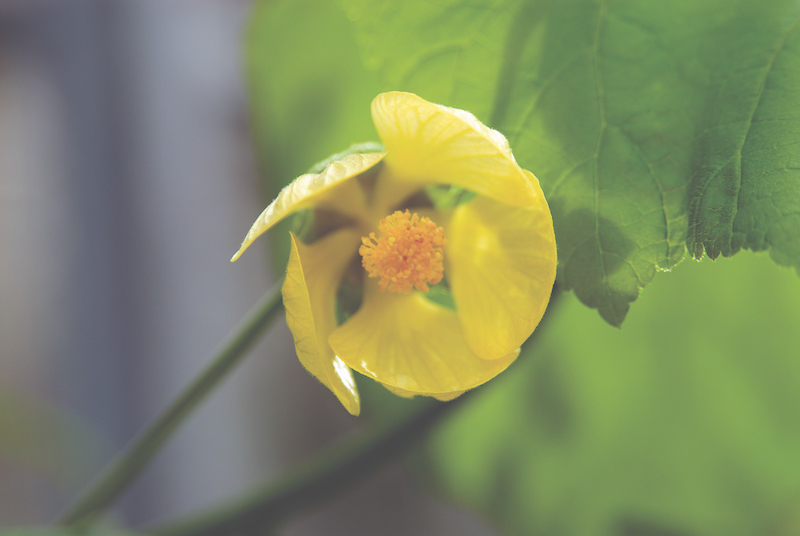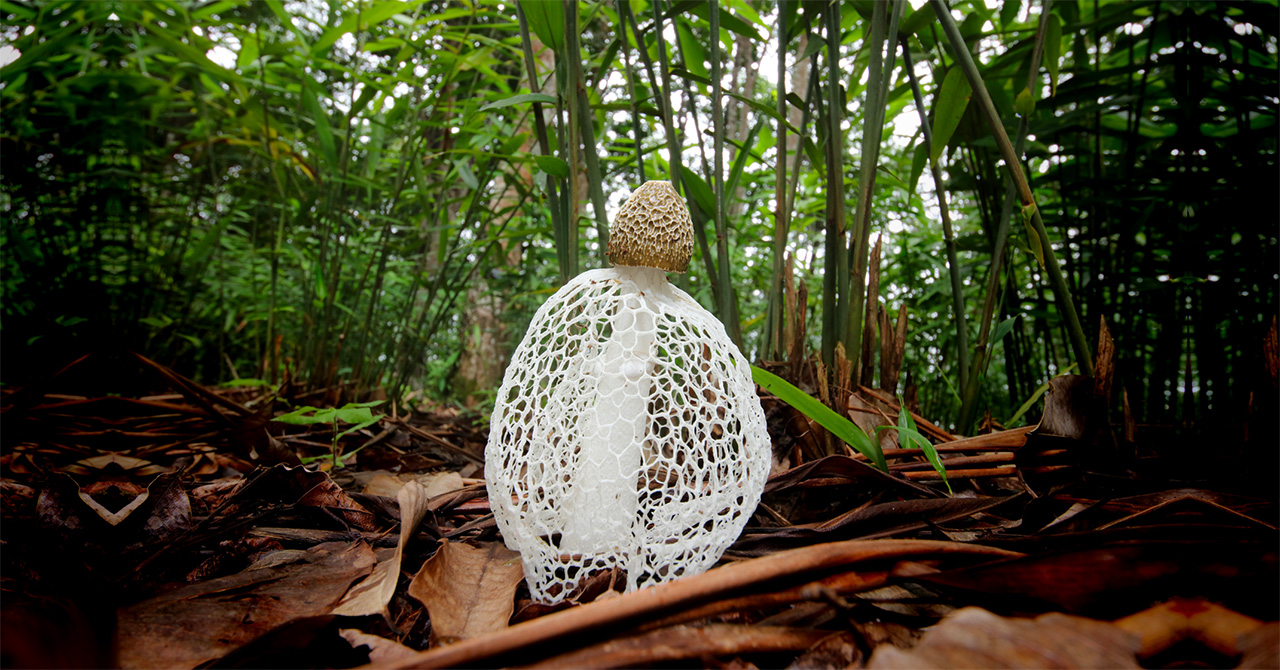- The Royal Botanic Gardens, Kew’s “State of the World’s Plants and Fungi” report assesses our current knowledge of plants and fungal diversity, the threats they face and how to protect them.
- The report warns that many plant and fungal species, 45% of documented flowering plants and half of all analyzed fungi risk extinction (though less than 0.4% of identified fungi have been assessed for extinction to date).
- The report identified 32 plant diversity darkspots, places where plants are highly endemic but severely under-documented, including Colombia, New Guinea and China South-Central.
- Report authors argue that priority conservation areas should consider distinctiveness in plants or “phylogenetic diversity” and found that these hotspots of phylogenetic diversity differ from the traditional biodiversity hotspots approach.
A new report from the Royal Botanic Gardens, Kew (RBG Kew) warns that Earth’s vast numbers of plant and fungal species are threatened with extinction, and many may meet that fate before science ever describes them.
The “State of the World’s Plants and Fungi” report draws on research from 200 scientists across 30 countries. A keystone of the report is the newly compiled World Checklist of Vascular Plants, led by Kew’s Rafaël Govaerts. The checklist, 35 years in the making, represents the first complete catalog of the 350,386 known plant species and their global ranges — a landmark accomplishment described as “the vital first step in documenting life on Earth.”
The report includes concerning findings for plants. Researchers used predictive models to forecast extinction risks across nearly 400,000 documented flowering plants for the first time. They estimate that 45% of these are potentially threatened with extinction, with islands like Hawaii, Madagascar, New Caledonia, Borneo and the Philippines serving as predicted extinction hotspots.
Scientists have described 100,000 species of plants and fungi since the start of 2020. However, researchers estimate we have yet to find 15% of the world’s flora. Researchers state this pace is far too slow to document all of these species before extinction.

Of the estimated 300,000 plants that remain undiscovered, 77% of those may go extinct before discovery, according to a new modeling study included in the report. Matilda Brown, lead author of the study and conservation science analyst at RBG Kew, noted the sobering implications of this finding, telling Mongabay, “We could lose half our future medicines” if such losses occur and that these plants have intrinsic and ecological value.
“People aren’t taking extinction seriously enough,” Brown said in the report. “Because extinction stories are usually about obscure species, in places people have never heard of, and when they ask, “What is x species useful for?”, we say, “Well, we don’t know, and now it’s extinct we’ll never know.”
The report estimates an astonishing 2-3 million fungal species exist globally, yet more than 90% remain unnamed by science. At current description rates, completing a global inventory could take centuries.

Less than 0.4% of identified fungi have been assessed for extinction to date. Of those analyzed, more than half were deemed threatened. Thousands more may disappear before science can record them.
The report also identified 32 plant diversity darkspots, places where plants are highly endemic but severely under-documented. Colombia, New Guinea and China South-Central had the greatest global descriptive and geographical data shortfalls.
New Guinea is the only tropical darkspot not already classified as one of the biodiversity hotspots. This designation uses concentrations of threatened endemic species to prioritize protection.
“Just as our early ancestors needed to know what grows where for their own survival, so plants and fungi need us to know where they grow — to enable us to safeguard their continued existence for generations to come,” Alexandre Antonelli, director of science at the RBG Kew said in the report.

The report also examined new ways of measuring biodiversity that could impact global conservation. Report authors argue that the biodiversity hotspots method fails to consider evolutionary distinctiveness in plants or “phylogenetic diversity” and found that these hotspots of phylogenetic diversity differ from traditional biodiversity hotspots.
“Preserving such diverse communities of species makes it more likely that we will conserve the range of genes, forms and functions that make up healthy and resilient ecosystems and have the highest potential for use by humans,” the report stated.
Understanding where to prioritize protection and conservation efforts becomes more important as governments strive to meet U.N. global biodiversity framework goals and the “30 by 30” commitment to protect 30% of the planet by 2030.
“Which are the areas where, if you protect 30%, you’re covering as many species as possible? Otherwise, there’s a big danger you’re just protecting the cheapest areas. You know, just check the box,” Antonelli told the Observer.

Overall, the report presents a bleak outlook of extraordinary biodiversity disappearing before science can record it. As Antonelli said in the report, “Business as usual is not good enough.”
Plant and fungi declines are in line with a larger global biodiversity crisis. More than a million plant and animal species are currently threatened with extinction, suggests the Intergovernmental Science-Policy Platform on Biodiversity and Ecosystem Services (IPBES). Scientists suggest that we have surpassed the planetary boundary for biodiversity, pushing past the “safe operating space” for life on Earth.
Kew scientists recommend immediate action such as default threatened status for new species, integrating fungal conservation efforts, leveraging new technologies, increasing open access data sharing (just 23% of recent taxonomy literature is open access) and targeting research and conservation in darkspots like New Guinea.
Also, the report said, “everyone must play their part.” Global initiatives, such as the Global Lichen Hunt and FunLeaf, are ways citizens can participate in filling in gaps in fungal biodiversity data. Most countries have unique plants that citizens can learn about and search for, and as the report said, “an enthused and motivated populace is needed to provide a new generation of planetary stewards.”
NOTE: “State of the World’s Plants and Fungi 2023” is co-released with a collection of papers published by New Phytologist and Plants, People, Planet. The report is launched in tandem with an international symposium at RBG Kew from October 11-13, 2023.
Banner image of fungi emerging through dead wood covered in moss. Image by adege via Pixabay
Liz Kimbrough is a staff writer for Mongabay and holds a Ph.D. in Ecology and Evolutionary Biology from Tulane University, where she studied the microbiomes of trees. View more of her reporting here.
Read more about the biodiversity crisis:
Global biodiversity is in crisis, but how bad is it? It’s complicated
Citations:
Antonelli, A., Fry, C., Smith, R.J., Ede*, J., Govaerts, … Zuntini, A.R. (2023). State of the World’s Plants and Fungi 2023. Royal Botanic Gardens, Kew. DOI: doi: 10.34885/wnwn-6s63
Brown, M.J.M., et al. (2023a). Three in four undescribed plant species are threatened with extinction. New Phytologist. DOI: 10.1111/nph.19214
Ondo, I., Dhanjal-Adams, K., Pironon, S., Silvestro, D., Deklerck, V., Grace, O., … & Antonelli, A. (2023). Plant diversity darkspots for global collection priorities. bioRxiv, 2023-09. doi: 10.1101/2023.09.12.557387
FEEDBACK: Use this form to send a message directly to the author of this post. If you want to post a public comment, you can do that at the bottom of the page.
